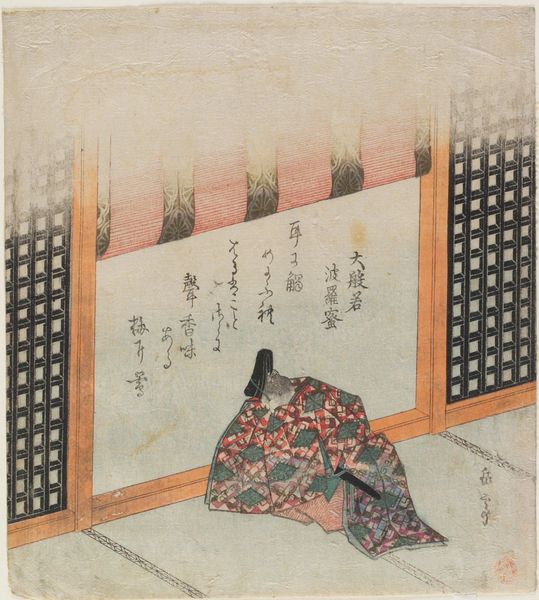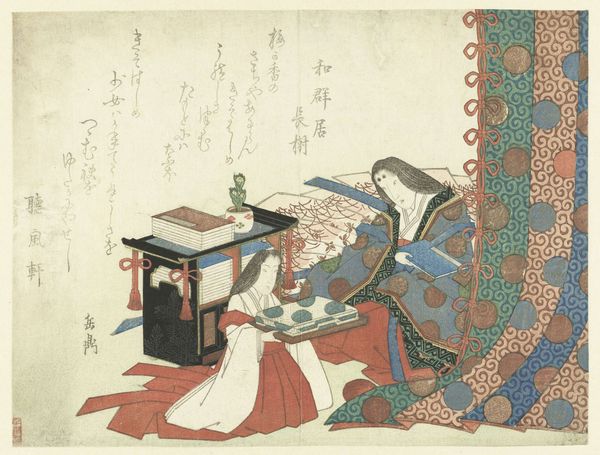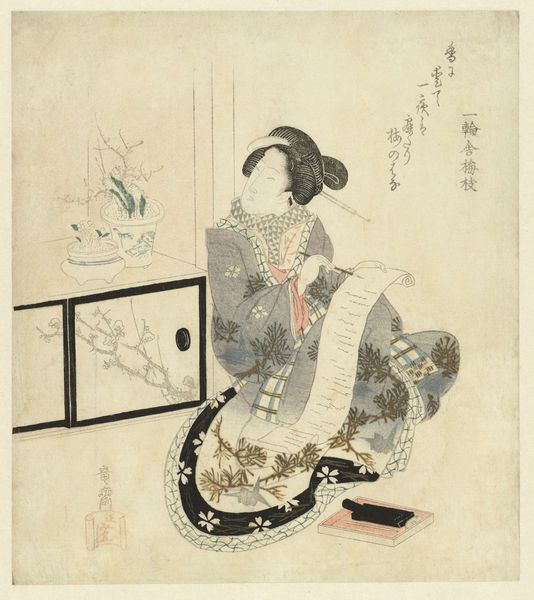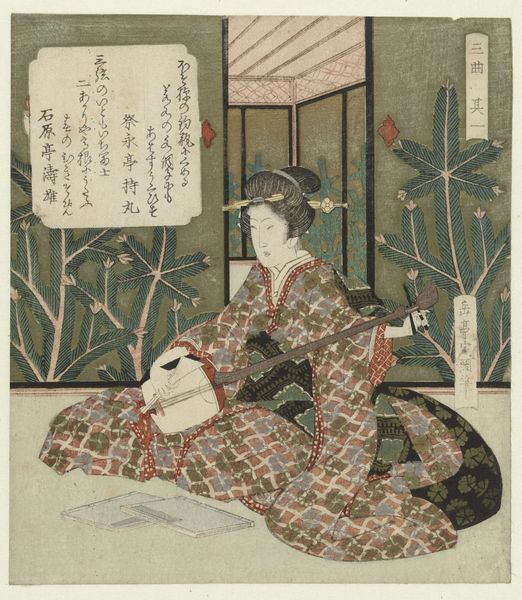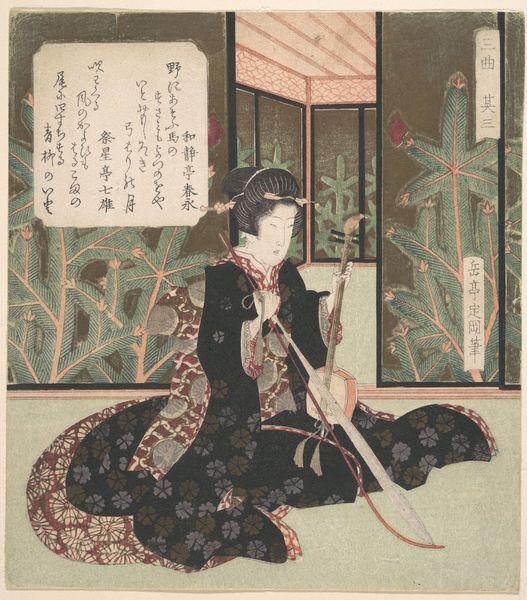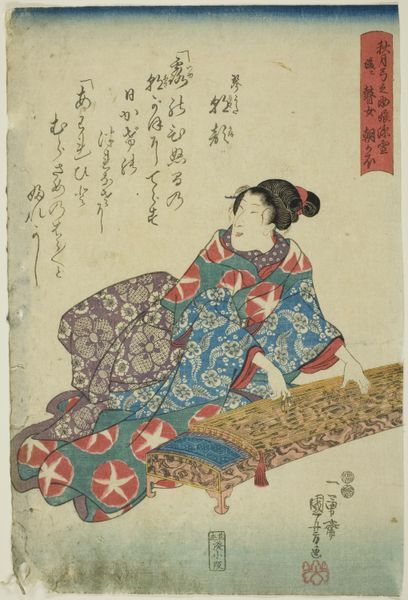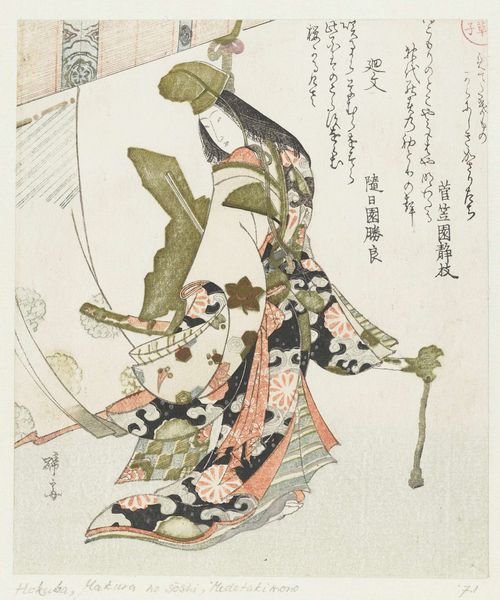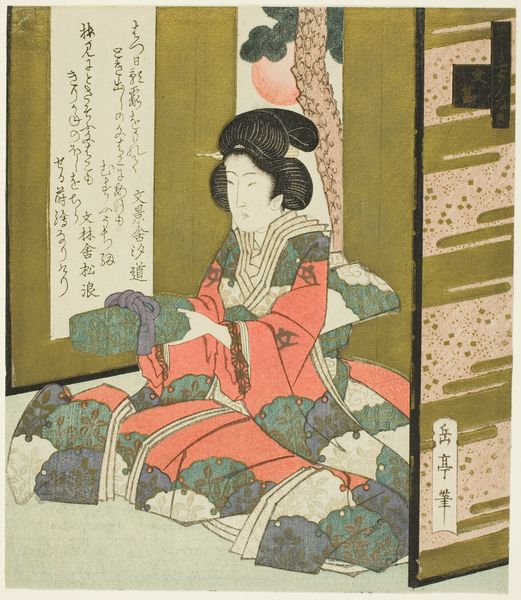
print, woodblock-print
#
portrait
#
water colours
# print
#
asian-art
#
ukiyo-e
#
figuration
#
woodblock-print
#
nude
#
watercolor
Dimensions: height 192 mm, width 183 mm
Copyright: Rijks Museum: Open Domain
Editor: This is "Pop en kistje" by Shozo Ittei, a woodblock print from around 1820 to 1830. The figure's reclining pose, coupled with the patterned backdrop, gives it such an intimate feel. What catches your eye when you look at it? Curator: I see a deliberate construction of desire within a rigid social structure. This piece belongs to the ukiyo-e tradition, reflecting the "floating world" of pleasure districts. Consider how the artist presents the female figure; is she empowered or objectified by her nudity and surroundings, knowing that this piece was designed for the consumption of male audiences? Editor: I hadn't thought about that perspective. It’s interesting how what might appear as a simple, intimate scene can be viewed through a critical lens. How was something like this displayed at the time? Curator: These prints were mass-produced and circulated widely, a form of popular culture. Think about how they were collected, displayed in private spaces, and how they participated in shaping ideas about beauty, sexuality, and social status. Does knowing this shift your initial reading of the work? Editor: It certainly complicates it. It feels less innocent and more like a reflection of a male-dominated society. Curator: Precisely. And that tension, that play between the artistic and the social, is where the power of historical analysis lies. What about the textual elements – do they have a bearing in how one reads this visual representation? Editor: I would imagine so, because its inclusion means it was very much intended to inform the reading of the artwork! It's amazing how much history can be packed into a single image. Curator: Exactly! It’s a window into the past, prompting us to consider the complexities of representation and spectatorship.
Comments
No comments
Be the first to comment and join the conversation on the ultimate creative platform.
